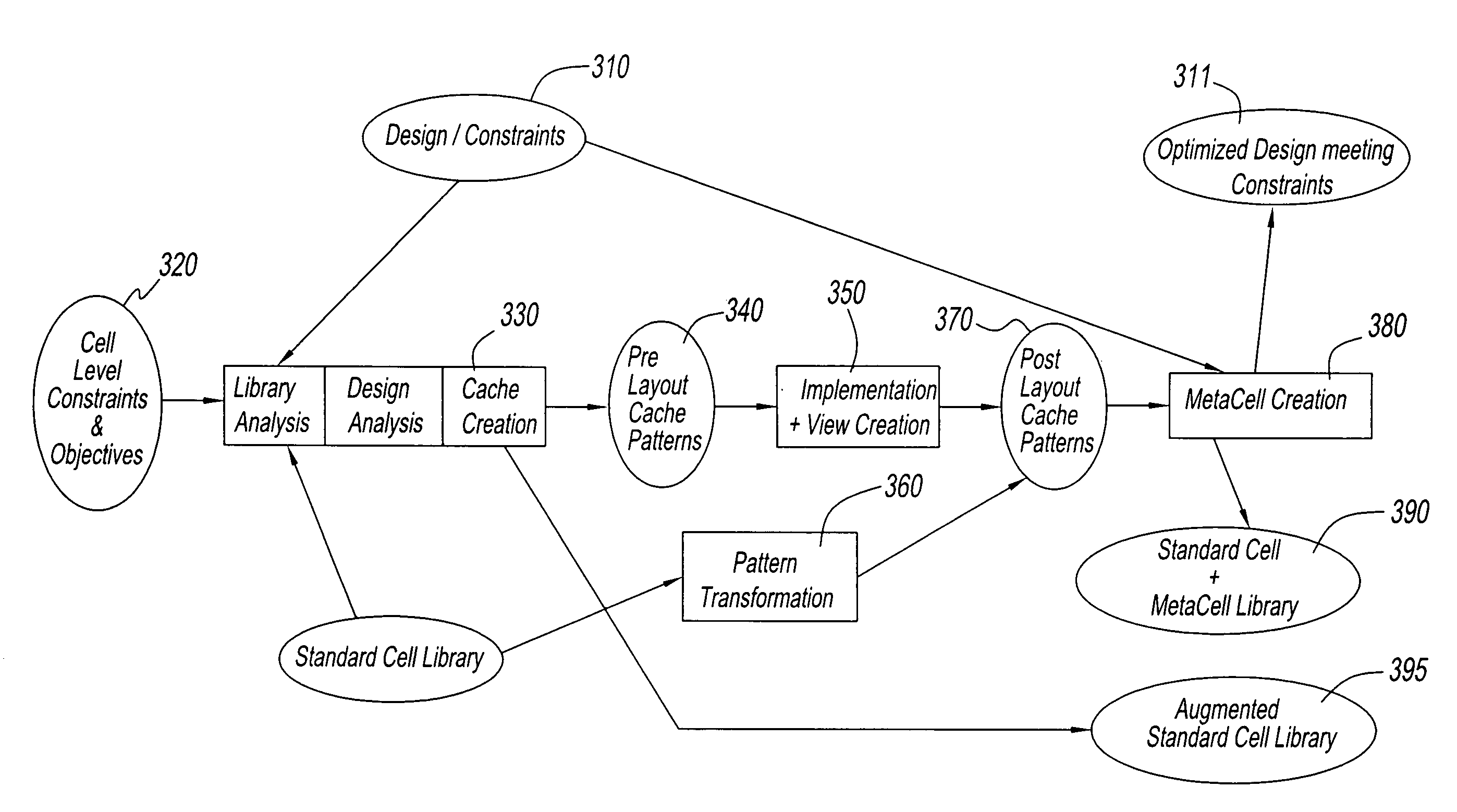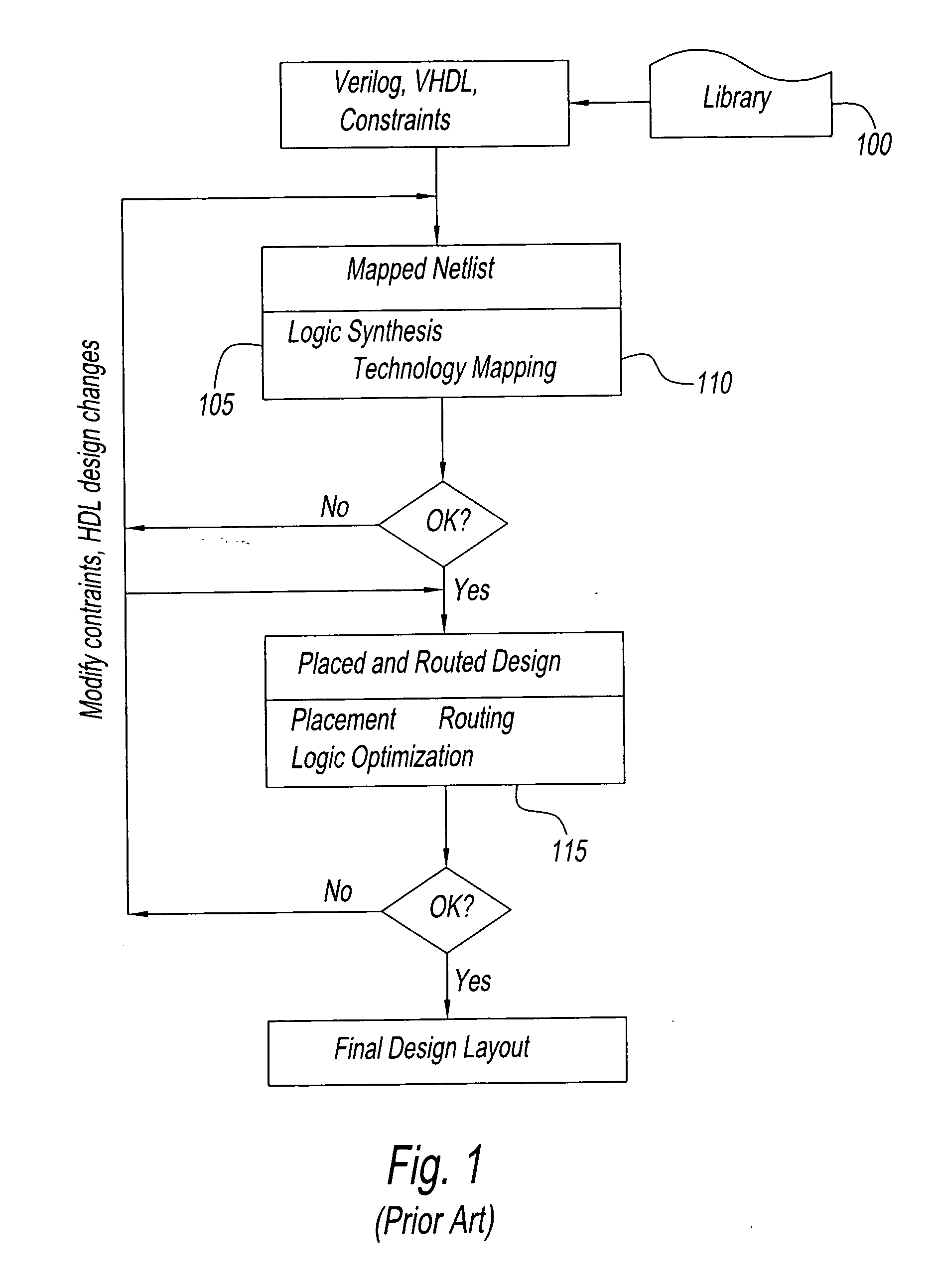Method of IC design optimization via creation of design-specific cells from post-layout patterns
a post-layout pattern and design optimization technology, applied in the field of process and system of integrated circuit (ic) design optimization, can solve the problems of inability to customize an ic, limited (static) set of standard cells in a library, labor-intensive custom design process, etc., and achieve the effect of improving a plurality of design objectives, nullifying inaccuracy of certain design metrics, and tight physical binding
- Summary
- Abstract
- Description
- Claims
- Application Information
AI Technical Summary
Benefits of technology
Problems solved by technology
Method used
Image
Examples
Embodiment Construction
[0047]A method for optimizing an integrated circuit design comprising: creating a cache of post-layout patterns; and optimizing the integrated circuit design using the cache of post-layout patterns to create design-specific and / or context-specific standard cells. The cache of post-layout patterns is created by the method comprising: analyzing a standard cell library for the distribution of cell characteristics over the various cells in each logic family and / or analyzing the standard cell library to determine the layout architectures of the cells; optionally, enhancing the standard cell library by adding new cells, wherein the new cells are based on the results of the analysis of cell characteristics and layout architectures, thereby combining the new cells with the standard cell library to create an augmented cell library; creating standard cell fragments, where the standard cell fragments are integrated circuit layouts that can be combined to construct a new standard cell, in whole...
PUM
 Login to View More
Login to View More Abstract
Description
Claims
Application Information
 Login to View More
Login to View More - R&D
- Intellectual Property
- Life Sciences
- Materials
- Tech Scout
- Unparalleled Data Quality
- Higher Quality Content
- 60% Fewer Hallucinations
Browse by: Latest US Patents, China's latest patents, Technical Efficacy Thesaurus, Application Domain, Technology Topic, Popular Technical Reports.
© 2025 PatSnap. All rights reserved.Legal|Privacy policy|Modern Slavery Act Transparency Statement|Sitemap|About US| Contact US: help@patsnap.com



